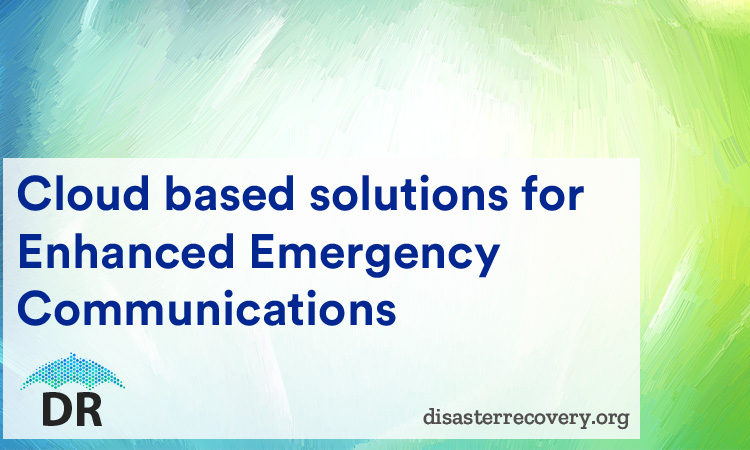Next generation 911 capabilities are being implemented across the country. After many decades, Public safety answering points (PSAPs) have evolved from conventional voice only phone networks to Internet Protocol (IP) based systems in more than 30 states with others soon to follow.
Cloud based solutions for Enhanced Emergency Communications

However, around 90 percent of PSAPs lack high end network capabilities that put digital voice, photos, texts, videos, location based services (in supported areas) and other such mobile device features at the disposal of callers. This is a crucial concern to be addressed as nearly 70 percent of calls coming into to PSAPs are from cell phone devices.
High end, robust networks are being installed to support emergency communications with speed, reliability and security. One of the main benefits is that the services rendered by these systems make no distinction between urban and rural areas – network performance is standardized across the entire state region.
Emergency communications services can be availed on different types of devices without any compatibility issues. For instance, these next generation systems are capable of ably supporting all the PSAPs and centers for receiving emergency calls across the length and breadth of any state in the country. These emergency communications systems are a combination of cloud computing, wireless and wireline technologies. Enhanced solutions allowed incoming calls to be managed with greater efficiency.
With a private cloud computing platform backed by highly redundant data centers, states can now equip emergency response strategies with next generation network capabilities at a competitive price. A high end virtual private network (VPN) provides connectivity between operators and the cloud computing service. Any PSAP on the network will allow call handling and the deployment of emergency services.
Since the cloud computing solution is made available by an external vendor, the state doesn’t have to concern itself with the management and maintenance of the infrastructure. The hosted system replaces the backroom equipment in all the PSAPs with just two highly redundant data centers. This way, expenditure on network infrastructure is kept to a minimum.
Connectivity between the PSAPs has made it possible to streamline crisis response procedures for greater reach and impact, especially when there is an overload of incoming emergency calls. Now, if a center is dealing with a technical problem or is receiving more calls than it can handle, the extra incoming calls can be routed to an alternate center that logs in as a PSAP and has access to all the relevant resources in order to track caller information – names, addresses, location coordinates and so on.
The system’s inherent redundancy protects the infrastructure from deadly catastrophes. Connectivity between all the PSAPs on the network means that each PSAP can step in as a backup site when another PSAP goes down. The wireless network on the grid doubles up as a backup connection for the primary connection framework. And since the data centers are redundant, operations can be failed over when one of the two data centers is brought down.
As more states adopt this new and improved technology, information exchanged across state borders can be collated and analyzed for intelligence purposes. The entire system can be integrated with similar setups in neighboring states. This can assist in sharing and integrating resources. Crisis response efforts can be mobilized across regional borders and jurisdictions.
Mobile embedded technologies such as Wi-Fi, Bluetooth and Geographic Information Systems (GIS) are being increasingly incorporated into next generation systems in order to respond more efficiently to incoming calls from people who are unable to give their exact whereabouts.
More often than not, owing to the high stress levels during an emergency, lack of sufficient duration and clarity on incoming calls prevent call takers from acquiring valuable information such as location, emergency service limits, nearest police or fire squad center, medical units etc. With the new and improved next generation system, 20 seconds are enough for zeroing in on the caller’s exact location coordinates along with other relevant information.
Tracking is now possible even when people are situated in (a) regions affected by extreme weather conditions such as heavy deposits or snow, silt, debris etc. or (b) rural or remote areas that lack sufficient access through roads.
Hosted services can be connected with the PSAPs through a high end network after mapping the entire state on a GIS system through addresses, street locations, important buildings and landmarks, fire department centers, medical centers etc.
The information collected can be compared with existing standards and deviations from the standards can be corrected to create a consistent database.
While these efforts are a significant step forward in the right direction, there are more enhancements and upgrades such as text to 911 capabilities that can improve response and recovery effort efficiencies.
The primary objective of emergency services is to ensure public safety. Emergency teams need to constantly reinvent crisis strategies in order to better serve local residents who are immediately impacted by any extreme incident. And innovations such as next generation emergency communication systems are the way forward.

